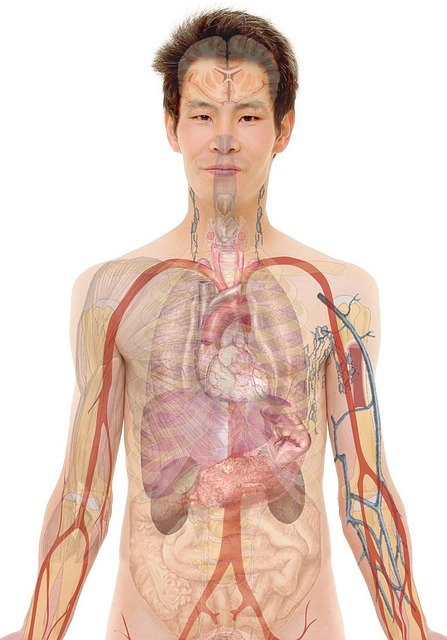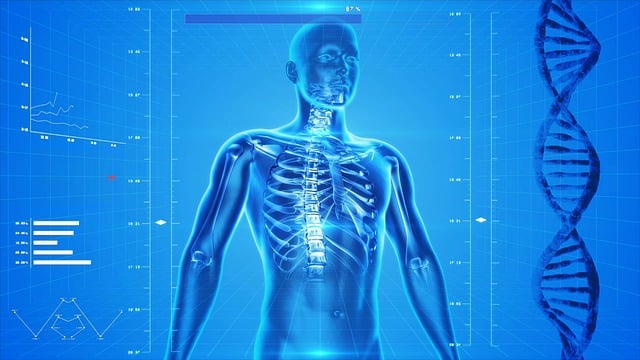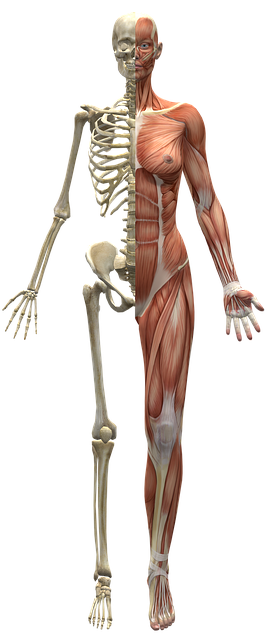Body sculpting, powered by advanced technologies like cryolipolysis, HIFU, 3D imaging, AI algorithms, and VR simulations, offers non-invasive body contouring solutions. These modern tools enable precise fat reduction, muscle toning, and skin improvement, enhancing silhouette, confidence, and well-being without surgery or long recovery periods. Key innovations include electromagnetic energy emitters, laser-assisted systems, CoolSculpting, and body sculpting apps, providing personalized, effective, and safe body shaping options to a global audience while addressing ethical considerations for responsible technology adoption.
“Discover the future of body contouring with technology. From understanding the foundational techniques and goals of body sculpting to exploring innovative digital tools, this comprehensive guide delves into the transformative role of tech in aesthetics. We examine high-tech devices for precise contouring, non-invasive treatments, 3D imaging, virtual reality, fat reduction science, and ethical considerations. Uncover how these advancements are revolutionizing self-care, patient experiences, and personalized body contouring plans.”
Understanding Body Sculpting: Techniques and Goals

Body sculpting, a transformative art, involves advanced techniques aimed at reshaping and enhancing physical features. At its core, it’s about achieving a desired silhouette by manipulating fat distribution, toning muscles, and improving skin appearance. Modern technology plays a pivotal role in this process, offering non-invasive alternatives to traditional methods like surgery.
Key techniques include body contouring procedures such as cryolipolysis, which freezes and eliminates targeted fat cells, and high-intensity focused ultrasound (HIFU), that uses sound waves to break down fat. These innovations allow for precise adjustments to the body’s contours, defining muscles and reducing unwanted fat without incisions or extensive recovery periods. The ultimate goal is to empower individuals to attain their ideal physique, boosting confidence and overall well-being.
The Role of Technology in Shaping the Future of Aesthetics

Technology is revolutionizing the field of aesthetics, particularly in body contouring, and paving the way for a future where beauty and wellness merge seamlessly. Advanced tools and techniques are now available, offering precise and non-invasive ways to reshape and enhance various parts of the body. From 3D imaging that allows for detailed body mapping to AI algorithms guiding treatments, these innovations ensure personalized and effective results.
The digital age has brought about a new era of body contouring, providing individuals with more control over their appearance. Technologies like laser lipo, cryolipolysis, and high-intensity focused ultrasound (HIFU) offer targeted fat reduction without incisions. Additionally, virtual reality simulations can predict outcomes, enabling patients to visualize transformations before treatment, fostering confidence in the process.
High-Tech Devices for Precise Body Contouring

The advancement of technology has brought about innovative solutions in the field of body contouring, offering precision and effectiveness like never before. High-tech devices are now revolutionizing the way we shape and sculpt our bodies, providing results that were once only achievable through invasive surgical procedures. These cutting-edge tools leverage the power of science and engineering to target specific areas with pinpoint accuracy, allowing for controlled fat reduction and muscle toning.
One such device is the electromagnetic energy emitter, which uses targeted waves to break down fat cells while leaving surrounding tissue unharmed. Another game-changer is the laser-assisted body contouring system, which can precisely melt away stubborn fat deposits and stimulate collagen production for enhanced skin tightness. These technologies not only provide safer alternatives but also offer non-invasive treatments, making them appealing to individuals seeking effective body contouring without surgery.
Non-Invasive Treatments: A Safer Approach to Body Sculpting

Non-invasive treatments have emerged as a safer and more appealing option in the realm of body contouring, offering significant advancements over traditional methods. These cutting-edge procedures utilize various technologies to target and reduce fat cells, tighten skin, and improve overall body shape without incisions or extensive recovery periods.
One prominent example is the use of laser technology, which emits precise energy to break down fat cells, leading to reduced circumference and improved body contouring. Similarly, radiofrequency treatments heat up deep layers of skin, stimulating collagen production and tightening loose skin. These non-invasive techniques not only provide effective results but also minimize risks associated with surgery, making them an attractive choice for individuals seeking safe and efficient body contouring solutions.
3D Imaging and Its Impact on Personalized Body Contouring Plans

3D imaging technology has revolutionized the field of body contouring, offering unprecedented precision and personalization in aesthetic procedures. By capturing detailed measurements of a patient’s anatomy, 3D scanners provide healthcare professionals with a comprehensive visual understanding of their body shape and structure. This advanced imaging allows for highly customized treatment plans tailored to individual needs.
With 3D imaging, practitioners can accurately identify problem areas and plan interventions with meticulous detail. It enables the visualization of subcutaneous fat distribution, muscle definition, and skin elasticity, all of which are crucial factors in achieving desired body contours. This technology ensures that body contouring procedures, such as liposuction or muscle toning treatments, are performed with maximum efficiency and safety, delivering optimal aesthetic outcomes for patients.
Virtual Reality: Enhancing Patient Experience and Visualization

Virtual Reality (VR) is transforming the landscape of body contouring, offering patients an immersive and engaging experience during their aesthetic journeys. By putting users in a computer-generated environment, VR allows for detailed visualization of desired results, helping individuals understand and appreciate the potential outcomes of procedures like liposuction or body sculpting surgeries. This technology provides a safe and controlled space to explore different treatment options, making informed decisions about their appearance and well-being.
The patient experience is enhanced as VR enables interactive simulations, where individuals can virtually “try on” various body contouring techniques, witnessing the changes in real-time. This immersive visualization can boost confidence and satisfaction levels, fostering a positive relationship between patients and healthcare providers. With advanced graphics and haptic feedback, VR offers an innovative approach to pre-procedure planning and post-operative care, ensuring individuals are well-prepared and excited about their aesthetic transformations.
The Science Behind Fat Reduction Technologies

The science behind fat reduction technologies has evolved dramatically, utilizing a multifaceted approach to target and eliminate unwanted fat cells. Advanced techniques like CoolSculpting® employ cryolipolysis, where cold temperatures are used to break down and destroy fat cells non-invasively. This process is both precise and safe, as it specifically targets adipose tissue while sparing surrounding areas.
Another innovative method is high-intensity focused ultrasound (HIFU), which uses sound waves to penetrate deep into the skin, heating and destroying fat cells. This technology offers a non-surgical alternative to body contouring, with minimal downtime and no visible scars. By understanding the science behind these methods, consumers can make informed decisions about their journey towards achieving their desired physique.
Body Sculpting Apps: Digital Tools for Self-Care and Tracking Progress

Body Sculpting Apps have emerged as powerful digital tools for individuals striving for self-care and tracking progress in their body contouring journeys. These innovative applications offer a range of features, from virtual coaching to real-time progress visualization. Users can access personalized workout routines tailored to specific goals, whether it’s reducing cellulite, toning muscle, or shaping certain areas of the body. Many apps incorporate augmented reality (AR) technology, allowing individuals to virtually ‘try on’ different looks and see immediate visual feedback.
Additionally, these apps provide comprehensive tracking systems where users can log measurements, record workouts, and monitor their diet. This data visualization helps in identifying trends, staying motivated, and making informed adjustments to their self-care routines. The convenience of having such tools accessible through a smartphone has made it easier for folks to take charge of their body contouring goals, fostering a sense of empowerment and consistency in their fitness journeys.
Ethical Considerations and Future Prospects in Body Sculpting Technology

The rapid advancements in technology have opened up new possibilities in the realm of body contouring, offering innovative ways to shape and transform bodies. However, alongside these breakthroughs, ethical considerations demand meticulous attention. As technology becomes more precise and accessible, ensuring informed consent, privacy, and preventing potential psychological harm becomes paramount. The focus should be on enhancing natural beauty rather than promoting unrealistic standards, especially with the rise of social media influence.
Looking ahead, the future of body sculpting technology appears promising, with ongoing research exploring advanced techniques such as AI-guided procedures and minimally invasive treatments. These developments could lead to more personalized, efficient, and safe body contouring options. Moreover, integrating telemedicine and virtual consultations may increase accessibility, enabling individuals from diverse regions to benefit from these technologies.
